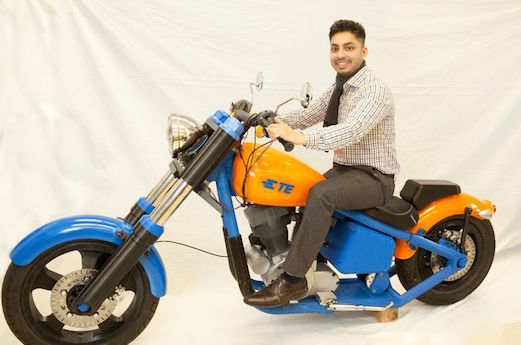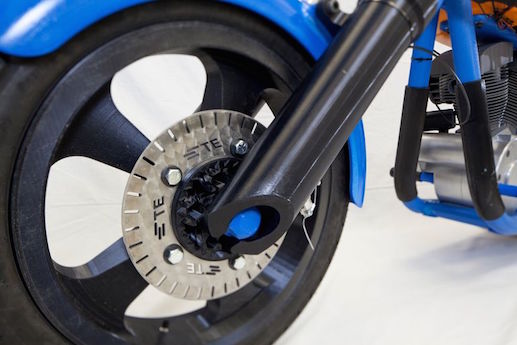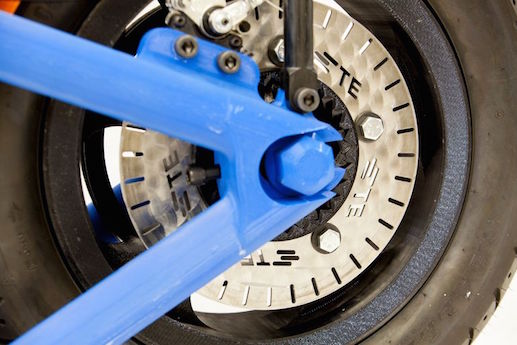It was only a matter of time, but now an American company has printed out a working motorcycle using a 3D printer.
It may not be much longer before manufacturers are doing the same, or at least printing out components using lightweight plastic composite materials and even metal.
The first 3D-printed working motorcycle was produced by TE Connectivity and unveiled at the recent Rapid 2015 3D printing conference and exhibition in Long Beach, California.
The Harley Softail-styled bike only needed tyres, brakes, some wiring, battery, belt drive, mirrors, side stand, some bolts and an electric motor before it was ready to roll.
All the rest, including the frame, tank and wheels are printed in plastic.
Back in January a New York artist built a plastic motorcycle with a 3D printer and a South African designer built a working lawnmower largely on a 3D printer.
However, this is the first time a working motorcycle has been printed on a 3D printer.
It can support 181kg which would be good for a rider and passenger.
While the engine only outputs 1hp (0.75kW) and the bike has a top speed of just 24km/h, it is the start of a new era in motorcycle production.
TE Connectivity claims it took 1000 hours to design and then print the bike which cost about $US25,000 to build, although prices of 3D printing are quickly reducing.
Home 3D printers now cost less than US$200, but they just make items out of plastic, which is fine for custom builders and restorers who may want to produce a plastic item that is difficult to obtain or uniquely designed.
Soon they could also be able to afford a metal 3D printer so they can even make engine parts as Michigan Technical University researchers have built a 3D metal printer that will cost less than $1500.
TE Connectivity printed some parts in bronze via Direct Metal Laser Sintering (DMLS) that uses a laser to melt shapes such as the headlight housing out of layers of metal powder.
The main load-bearing parts were built with Fused Deposition Modelling (FDM) technology that injects layers of ABS (acrylonitrile butadiene styrene) plastic enriched with the heat-resistant resin Ultem 9085.
TE Connectivity used this process to print several parts with complex dynamic properties, such as the frame.
The wheel bearings were printed in a single piece with the hub and drive sprocket, and tests reveal they hold up to the load and heat stress.





